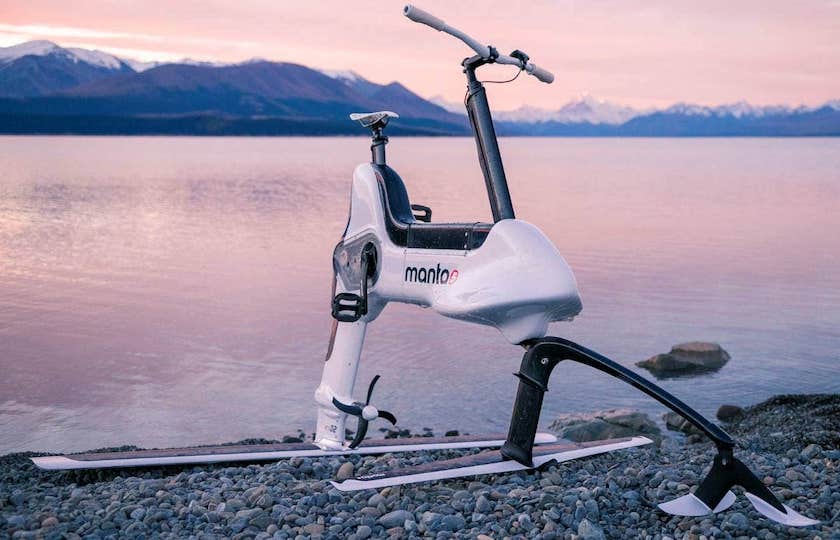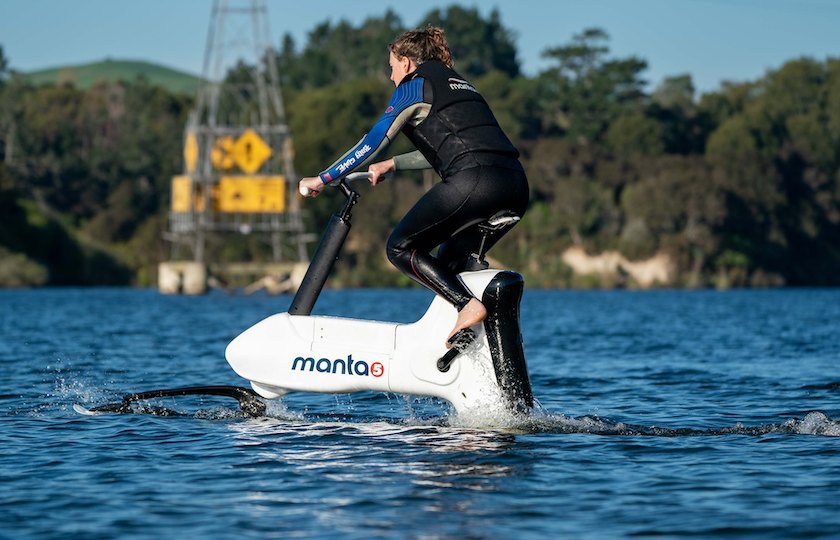The Manta 5 – the world’s first hydrofoil water e-bike, invented in New Zealand and making waves in California and Europe – has now surpassed 1000 sales around the world.
Using technology borrowed from America’s Cup yachts, the Manta 5 replicates the experience of cycling on roads on water, with all the accompanying health and lifestyle benefits.
In Australia, it sells for A$13,450 online from adventure gear retailer Future Movement, while in the US it is sold on the Manta 5 company website for US$8990 (+ shipping).
“Like flying, hang gliding, rollerskating, mountain climbing and deep-sea diving, this is a spectacular feeling,” explains Luke Bakhuizen of Future Movement. “If you’re a thrill-seeker then this is truly a Rolls Royce experience with ease and comfort. The Manta 5 is the future of cycling.”
Riders of various fitness levels can enjoy exploring ocean coastlines, train along waterways, or go cruising lakeside with friends and family. It can be launched from the beach, platform, a boat or in deep water.
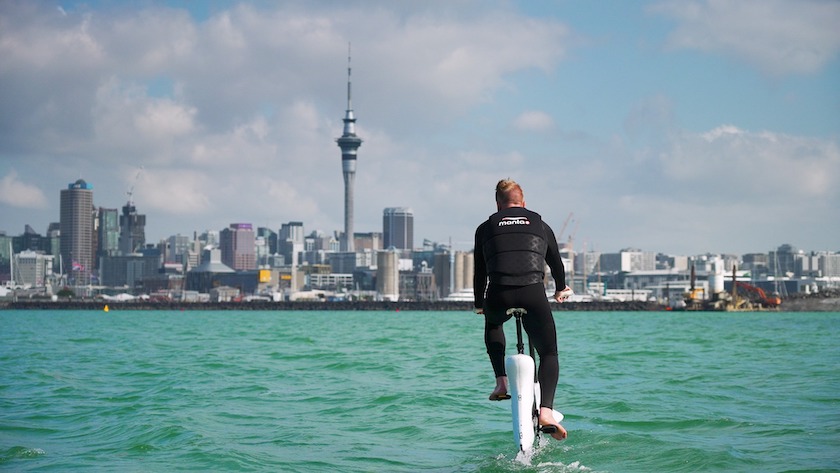
The Manta 5 Hydrofoiler was conceived a decade ago by Guy Howard-Willis, the founder of outdoors retail chain Torpedo7, now owned by New Zealand’s biggest retailer, The Warehouse Group, and the online marketplace 1-day.co.nz. The concept was brought to life by Roland Alonzo, a bicycle designer with a passion for cutting-edge technology and design.
Along the way, they brought in Greg Johnston, a Waikato Management School Alumni, who joined the Manta 5 team in 2016, and progressed into the role of GM. Prototypes were produced a year later and the first bike was delivered to a customer in November 2019 in New Zealand. Since then, it has been sold in Europe, North America and Japan.
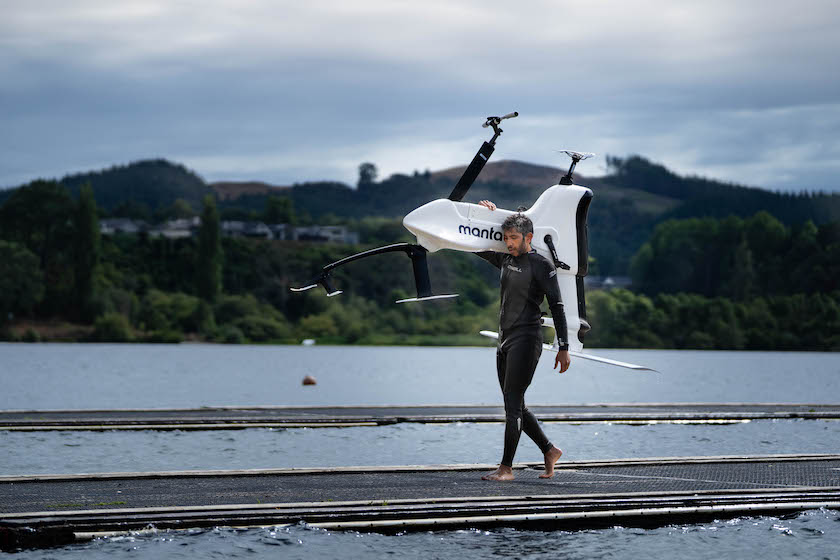
“The only things that make this a bike is the handlebars, pedals and seat. Everything else is more a Hydrofoil plane,” explains Johnston.
In New Zealand, the Manta 5 drew widespread attention in March after Tauranga cyclist Hayden Reeves rode one across the Cook Strait, a notoriously turbulent 26km channel separating the country’s North and South Islands, setting a world record.
You can watch a video of that crossing here:
How the water e-bike works
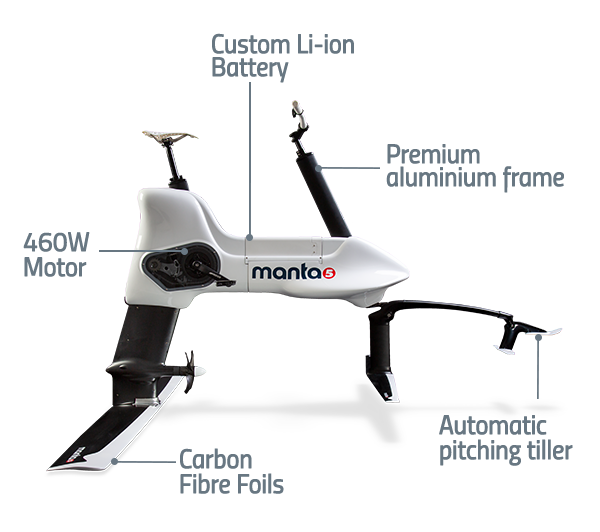
The Manta 5 water e-bike uses two hydrofoils made from carbon fibre – similar in appearance and purpose to aerofoils used by planes, and known in the sailing community as the underwater technology behind latest-generation giant America’s Cup yachts. Those combined with the technology used in road-ready e-bikes, and a small propellor keep the bike floating on the water. In his Cook Strait record, Reeves took 2 hours 28 minutes from shore to shore.
Pedalling bicycle-style on water is physically pretty demanding, so the onboard battery offers electric assistance sufficient to power the bike for an hour on the water. So when you ride for a while then rest, you don’t sink.
The manufacturer says the bike has a ride time capacity of four hours. After that, you can fold it up, place it in the boot of your car and take it back to base. A full charge takes three hours.
